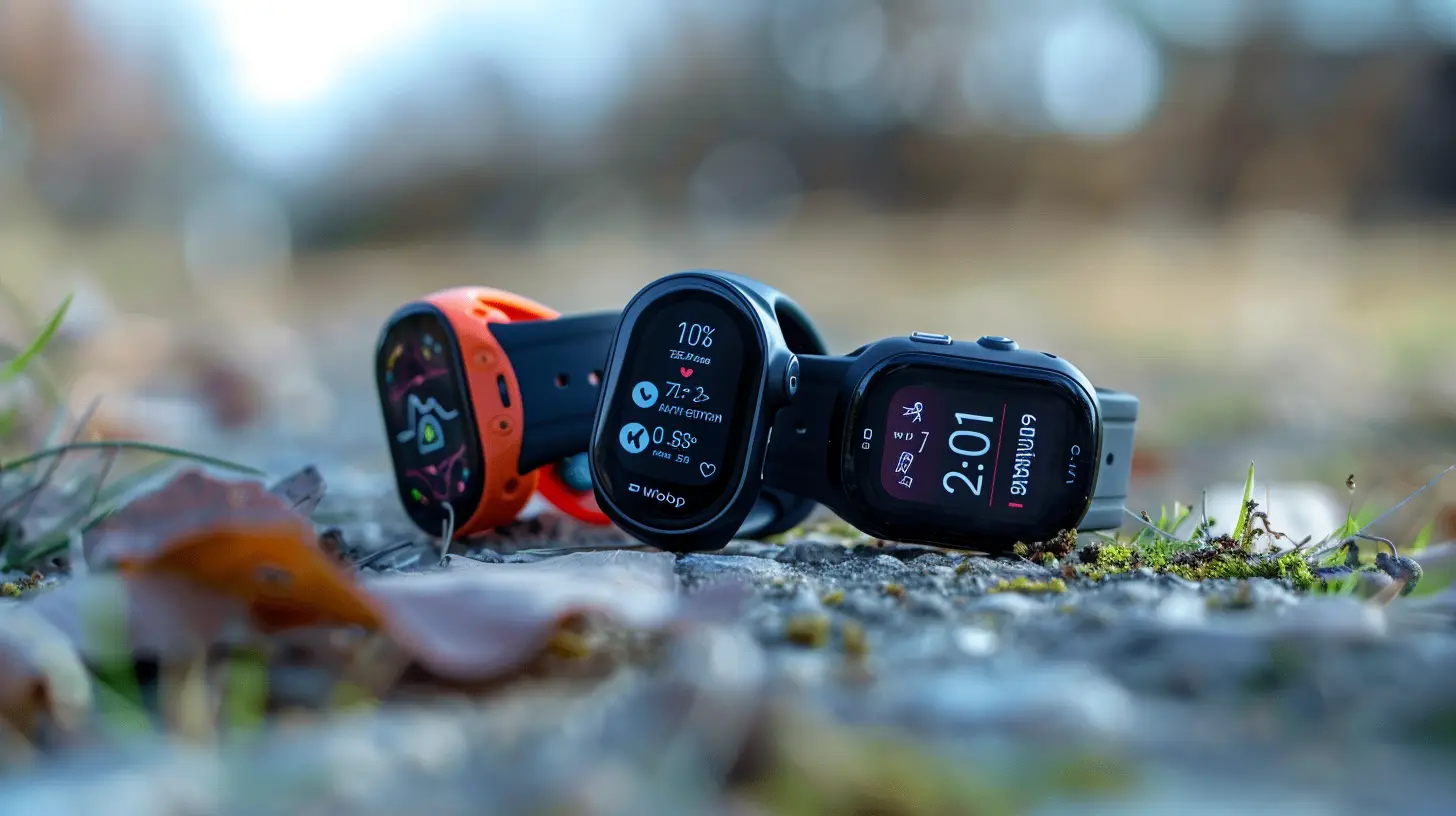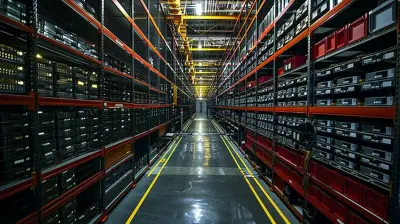Leveraging Machine Learning for Smarter Data Analytics
21 May 2025
We live in a world where data is constantly being generated—every click, every transaction, every social media post adds to the enormous amount of information being created every second. But what good is all that data if we can't make sense of it? That’s where data analytics comes in.
And here’s the fun twist: we're no longer just relying on traditional methods of analyzing data. With machine learning (ML) stepping into the spotlight, we’re now able to dive deeper into the data pool and extract much more valuable insights. Think of machine learning as your super-smart assistant that learns from patterns and helps you make smarter decisions.
In this article, we’re going to explore how machine learning is revolutionizing data analytics, why it’s important, and how businesses can leverage this powerful combination to stay ahead in today’s data-driven world.

What is Machine Learning?
Before we get into the nitty-gritty, let's quickly define machine learning. In simple terms, machine learning is a subset of artificial intelligence (AI) that allows systems to learn from data without being explicitly programmed. It’s like teaching your computer to recognize a cat without telling it, “Hey, this is a cat!”Using algorithms and statistical models, machine learning systems identify patterns in data and use those patterns to make predictions or decisions. Over time, they improve their accuracy as they’re exposed to more and more data. Pretty cool, right?

Why Traditional Data Analytics Isn't Enough Anymore
Traditional data analytics relies on predefined rules and structures. You know, the typical "if this happens, then do that" kind of logic. While this approach has been effective for many years, it has its limitations.- Rigid structure: Traditional analytics requires structured data. But let's face it, data in the real world is often messy, unstructured, and complex. Think about images, videos, or social media comments—these aren’t easily broken down into neat tables.
- Limited to human intervention: Traditional methods rely heavily on humans to define what patterns to look for. But humans are, well, human. We can’t always predict what insights might be hidden in the data.
- Can't handle large datasets efficiently: The volume of data today is mind-boggling. Traditional analytics tools struggle to process and analyze such massive datasets effectively.
This is where machine learning shines. It can handle unstructured data, find patterns that humans might miss, and scale its analysis to handle enormous datasets. In a way, machine learning is like giving your data analysis a turbo boost.

How Machine Learning Enhances Data Analytics
Alright, let’s get into the exciting part—how exactly does machine learning make data analytics smarter? Here are a few ways ML takes data analysis to a whole new level:1. Automating Data Processing
Imagine you’ve got a mountain of data, and it’s your job to sift through it to find useful insights. Exhausting, right? Machine learning can automate much of the data processing tasks that would otherwise take hours (or even days) to do manually.ML algorithms can automatically detect anomalies, clean up messy data, and even transform unstructured data (like text or images) into a format that’s easier to analyze. It’s like having a super-efficient data assistant that does the boring stuff for you.
2. Uncovering Hidden Patterns
One of the most powerful things about machine learning is its ability to identify patterns in data that humans might overlook. And the best part? It doesn’t need to be told what to look for—it learns from the data itself.For instance, an e-commerce company could use machine learning to analyze customer browsing and purchasing behavior. Without explicitly being told what to look for, the algorithm might discover that customers who buy a certain type of product are also more likely to purchase another seemingly unrelated item. These are insights that traditional analytics might miss.
3. Predictive Analytics
Ever wish you could see into the future? Well, with machine learning, you kind of can.Predictive analytics is all about using historical data to make predictions about future outcomes. Machine learning algorithms excel at this because they can learn from past data and apply that knowledge to predict future events.
For example, in the world of finance, machine learning models can analyze past stock market data and predict how certain stocks will perform in the future. Or in healthcare, ML can predict which patients are most likely to develop certain conditions based on their medical history.
4. Real-Time Decision Making
In today’s fast-paced world, businesses need to make decisions in real-time. Machine learning can help with that by processing and analyzing data on the fly.Think about self-driving cars. These vehicles use machine learning to analyze data from sensors in real-time, allowing them to make split-second decisions about when to brake, accelerate, or change lanes. Similarly, businesses can use ML to make real-time decisions about things like inventory management, customer service responses, and even fraud detection.
5. Personalization and Recommendation Systems
Have you ever wondered how Netflix knows exactly what show you might want to watch next? Or how Amazon always seems to recommend the perfect product? That’s machine learning at work.Recommendation systems are one of the most common applications of machine learning in data analytics. By analyzing user behavior and preferences, ML algorithms can make personalized recommendations that are tailored to each individual user. This not only improves the user experience but also boosts sales and engagement.

Real-World Applications of Machine Learning in Data Analytics
Now that we’ve covered the "how," let’s take a look at some real-world applications of machine learning in action. These examples show just how versatile and powerful machine learning can be in different industries.1. Healthcare
In healthcare, machine learning is being used to analyze patient data and predict outcomes. For example, ML algorithms can predict which patients are at risk for certain diseases based on their medical history, lifestyle, and genetic factors. This allows doctors to take preventive measures and provide personalized treatment plans.Additionally, machine learning is being used to analyze medical images (like X-rays and MRIs) to detect conditions like cancer at an earlier stage, improving patient outcomes.
2. Retail
In the retail industry, machine learning is revolutionizing customer experience. Retailers can use machine learning to analyze customer behavior, predict future purchasing habits, and optimize inventory management.For instance, machine learning can help retailers predict which products will be in high demand during certain times of the year, allowing them to stock up ahead of time and avoid stockouts or overstock situations.
3. Finance
Machine learning is changing the game in finance, especially in fraud detection and risk management. Banks and financial institutions can use ML algorithms to analyze transaction data in real time and flag suspicious activities that might indicate fraud.Similarly, machine learning can be used to assess credit risk by analyzing a person’s financial history and predicting their likelihood of defaulting on a loan.
4. Manufacturing
In manufacturing, machine learning is being used to optimize processes and improve efficiency. For example, ML algorithms can analyze sensor data from machines to predict when a piece of equipment is likely to fail, allowing for preventive maintenance and reducing downtime.Machine learning is also being used to optimize supply chain management by predicting demand and optimizing inventory levels.
Challenges and Considerations
While machine learning offers incredible potential for data analytics, it’s not without its challenges. Here are a few things to keep in mind:1. Data Quality
Machine learning is only as good as the data it’s trained on. If the data is inaccurate, incomplete, or biased, the insights generated by the machine learning model will be flawed. This is why data cleaning and preprocessing are critical steps in any machine learning project.2. Interpretability
One of the biggest challenges with machine learning models is that they can sometimes be “black boxes.” This means that while the model might give highly accurate predictions, it’s difficult to understand how it arrived at those predictions. This lack of interpretability can be a problem, especially in industries like healthcare or finance, where transparency is crucial.3. Resource Intensive
Machine learning models, especially deep learning models, require significant computational resources. Training these models on large datasets can be time-consuming and expensive, so businesses need to weigh the costs and benefits before diving in.
The Future of Machine Learning in Data Analytics
There’s no doubt that machine learning is transforming the world of data analytics, and this is just the beginning. As ML algorithms become more sophisticated and data continues to grow at an exponential rate, the possibilities are endless.In the future, we can expect even more advanced applications of machine learning in areas like autonomous decision-making, predictive maintenance, and hyper-personalization. Businesses that invest in machine learning now will be well-positioned to leverage these advancements and stay ahead of the competition.
Conclusion
In a world where data is more valuable than ever, machine learning is the key to unlocking its full potential. By automating data processing, uncovering hidden patterns, predicting future trends, and making real-time decisions, machine learning allows businesses to gain smarter insights from their data.Whether you're in healthcare, retail, finance, or manufacturing, there's no denying that machine learning is the future of data analytics. So, if you haven’t already started exploring how ML can benefit your business, now's the time to hop on board.
all images in this post were generated using AI tools
Category:
Data AnalyticsAuthor:

Gabriel Sullivan
Discussion
rate this article
3 comments
Samantha McCarty
Unlocking hidden patterns, machine learning whispers secrets data never dared to reveal.
June 7, 2025 at 2:23 AM

Gabriel Sullivan
Thank you! Indeed, machine learning enhances our ability to uncover insights that can transform decision-making.
Graham
Great insights on leveraging machine learning for data analytics! I appreciate the clear examples and practical applications shared. They truly highlight the potential of this technology. Thank you!
May 29, 2025 at 12:15 PM

Gabriel Sullivan
Thank you for your kind words! I'm glad you found the examples helpful in showcasing the potential of machine learning in data analytics.
Taylor Kim
Great insights on the intersection of machine learning and data analytics! It's exciting to see how these technologies can enhance decision-making. Looking forward to more articles on practical applications and innovations in this field!
May 28, 2025 at 4:20 AM

Gabriel Sullivan
Thank you for your feedback! I'm glad you found the insights valuable. Stay tuned for more on practical applications in this exciting field!



